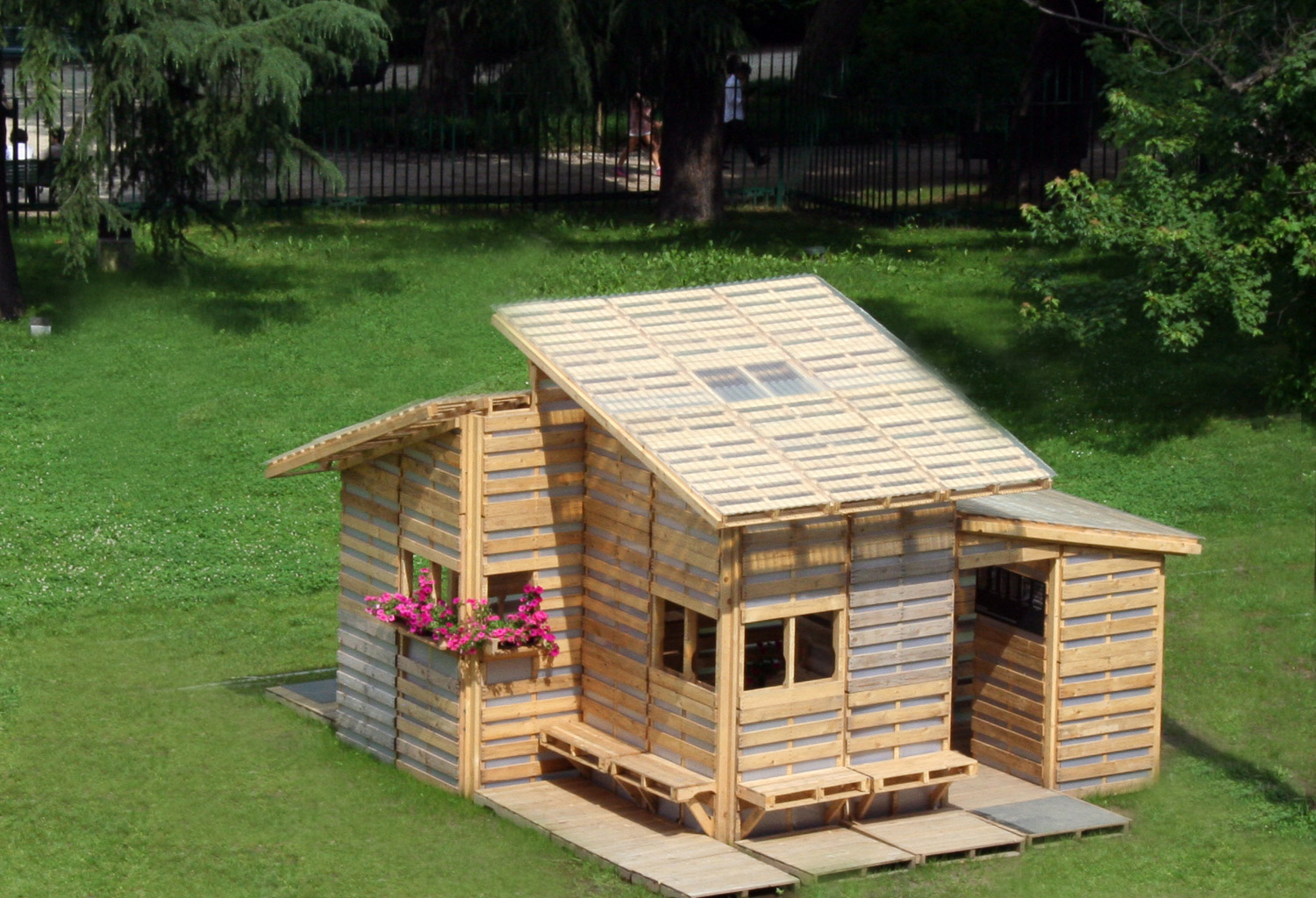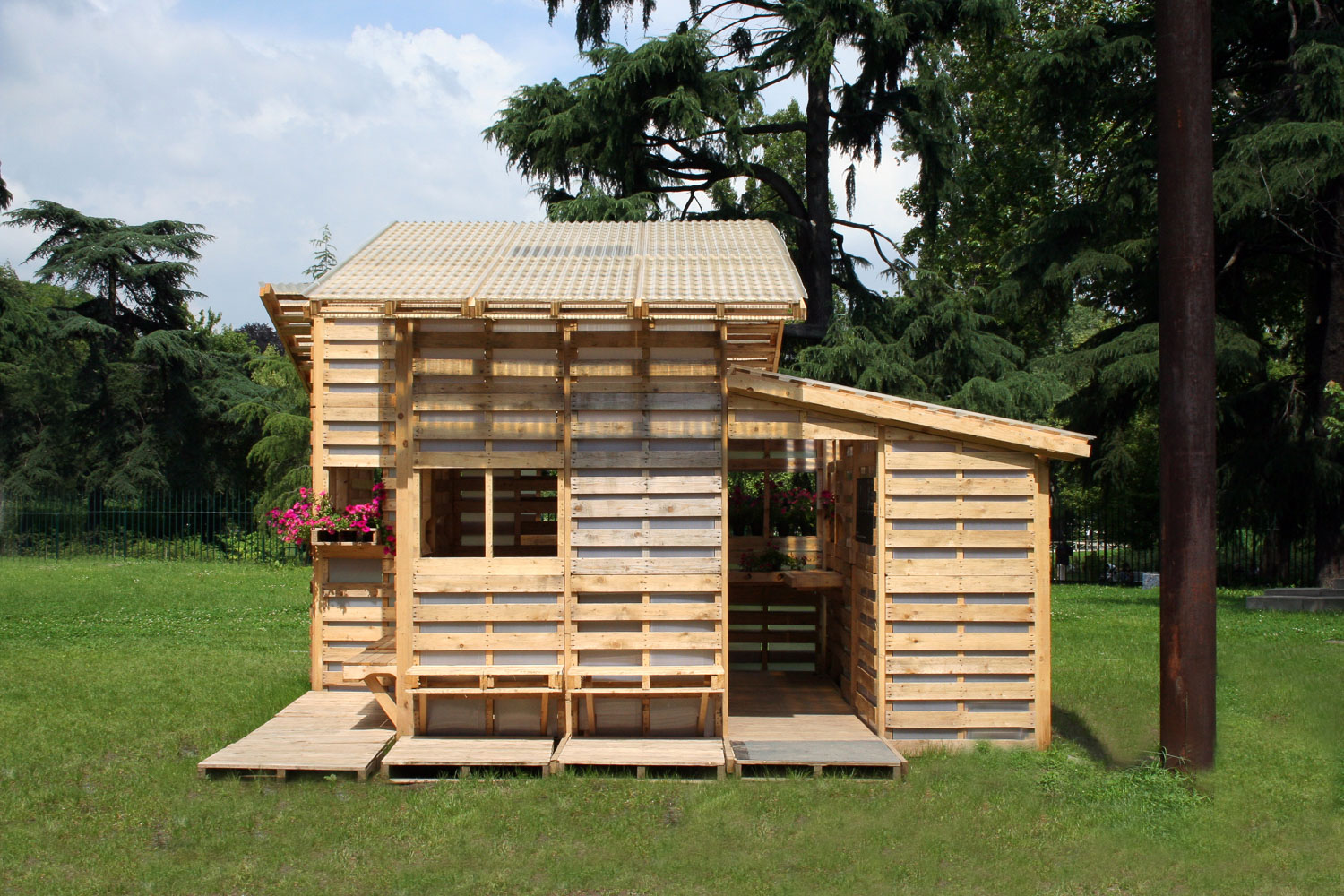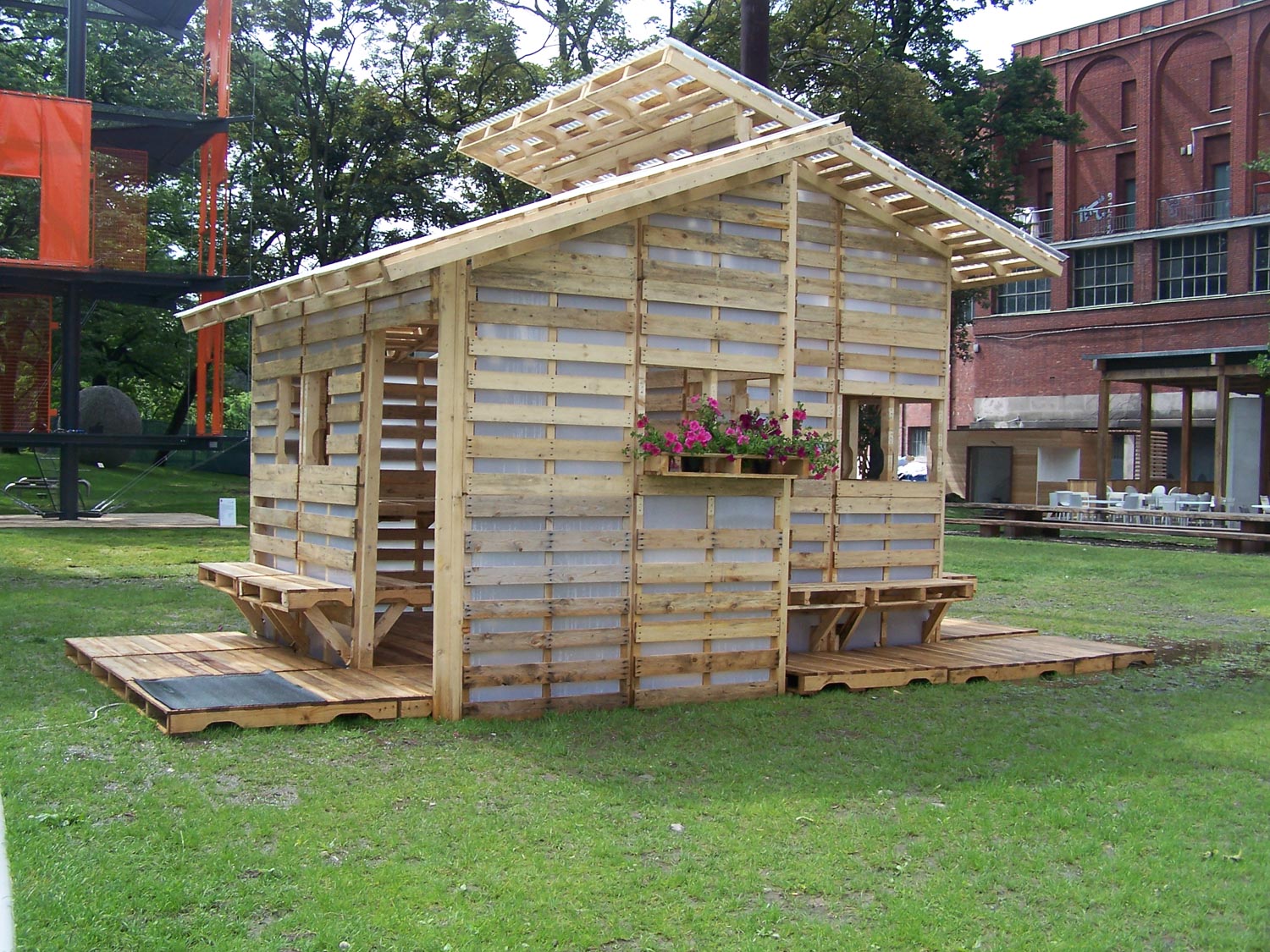THE PALLET HOUSE
THE PALLET HOUSE
Construction plans and details are available for $75.00: HERE





The Pallet House project by I-Beam Design, was initially conceived as a transitional shelter for the refugees returning to Kosovo after the war. These people needed an immediate alternative to the typical tent solution that could potentially transform into a new permanent home over time, even without access to sophisticated tools and materials. It has since become our aim to also develop the project as a more permanent housing solution to serve not only refugees in disaster stricken areas but also as a modular, prefabricated solution to affordable housing everywhere that can improve people's lives, the environment, society and even inspire greater diplomacy among the various cultures of the world.
The Pallet House is an inexpensive, efficient and easily realizable solution to the problem of housing people displaced by natural disaster, plagues, famine, political and economic strife or war. It is intended to serve returning refugees who come home and find their house partially or fully destroyed. This type of transitional housing bridges the gap between temporary tent shelter and permanent home.
The Pallet House is made of wooden shipping pallets. Pallets are versatile, recyclable, sustainable, easily assembled and universally esthetically pleasing. They are readily available in most countries and their transportation cost and weight is negligible when used to carry shipments of clothing, food, medical supplies or other relief aid. A simple pallet structure evolves naturally from emergency shelter to permanent house with the addition of more stable indigenous materials like rubble, stone, earth, mud, plaster and concrete.
The evolution of one 16' by 16' shelter into a permanent home requires approximately 100 pallets nailed or strapped together and lifted into place. Tarps draped over the basic structure or plastic corrugated sheets prevent water penetration until enough debris, stone, mud, earth, wood or any material from the immediate surroundings can be gathered to fill the wall cavities and cover the roof. Pallets may be pre-assembled with styrofoam insulation, vapor barrier, plywood or corrugated sheathing prior to shipping as well. As infrastructure is restored and cement or other materials become available the filled pallets can be covered with stucco, plaster, or roofing tiles transforming the makeshift shelter into a permanent home within a year or two. Consequently, the Pallet House adapts easily to almost every climate on Earth, and can be built in less than a week.
Pallets or skids, typically used for shipping are inexpensive to make and can be pre-assembled by hand at a rate of 200 per day per worker. They are readily available in most countries around the world, and their size, strength and weight is specifically designed for transportation. The pallet module provides great flexibility in terms of configuration, allowing each family to build according to their own needs. The size and layout of each home can evolve over time encouraging the participation of the community that lives in the houses.
The Pallet House won an Honorable Mention in a competition to design transitional housing for the returning refugees of Kosovo. It was featured in the New York Times article on Architecture for Humanity, Spain's Sunday magazine "El Pais" as one of the few projects in the 2000 Venice Architecture Biennale on-line exhibit to successfully address the exhibition theme "Less Aesthetics, More Ethics", and was published in the book "Design Like You Give a Damn". The Pallet House has received grants from NYSCA and the LEF Foundation towards design development.
Most recently, I-Beam Design was invited to build a full-scale Pallet House prototype for the Casa per Tutti Exhibition (May-September 2008) at the Architecture Triennale in Milan, Italy where other prototypes by Massimiliano Fuksas, MVRDV, Kengo Kuma and Alejandro Aravena and Red Cross Shelters were also featured. A similar prototype of the Pallet House was recently built in New York City and will be on display in one of Manhattan's downtown parks.
Architecture, design and construction have a huge impact on the environment and society. The recent events in China, Myanmar, Iraq, Darfur, Afghanistan, Katrina have unfortunately made us all the more aware of the symbolic, cultural and physical power of buildings. But there is another more pressing architectural crisis that affects all nations, and that is the question of housing of the 1 billion people who live in substandard housing around the world. The Pallet House provides a viable solution to the housing crisis while simultaneously empowering individuals with simple materials and tools to rebuild their lives as they see fit.
Construction plans and details are available for $75.00: HERE
